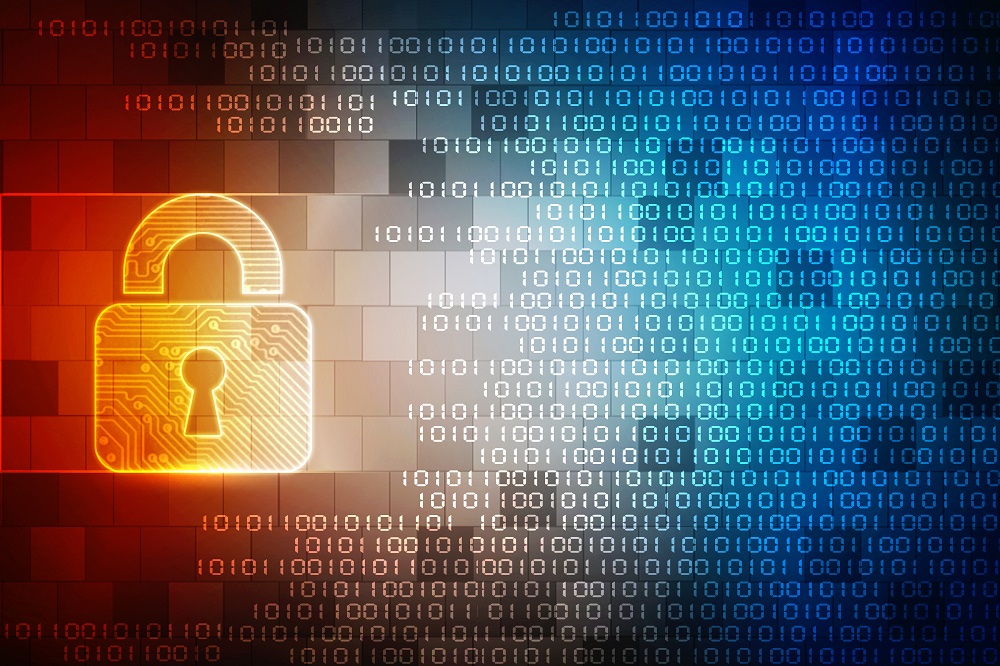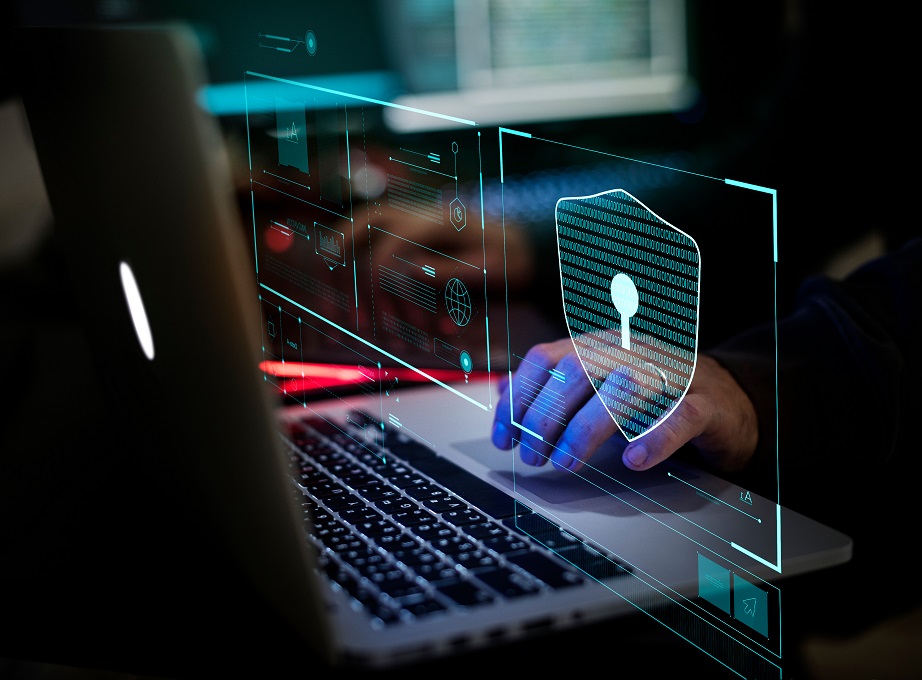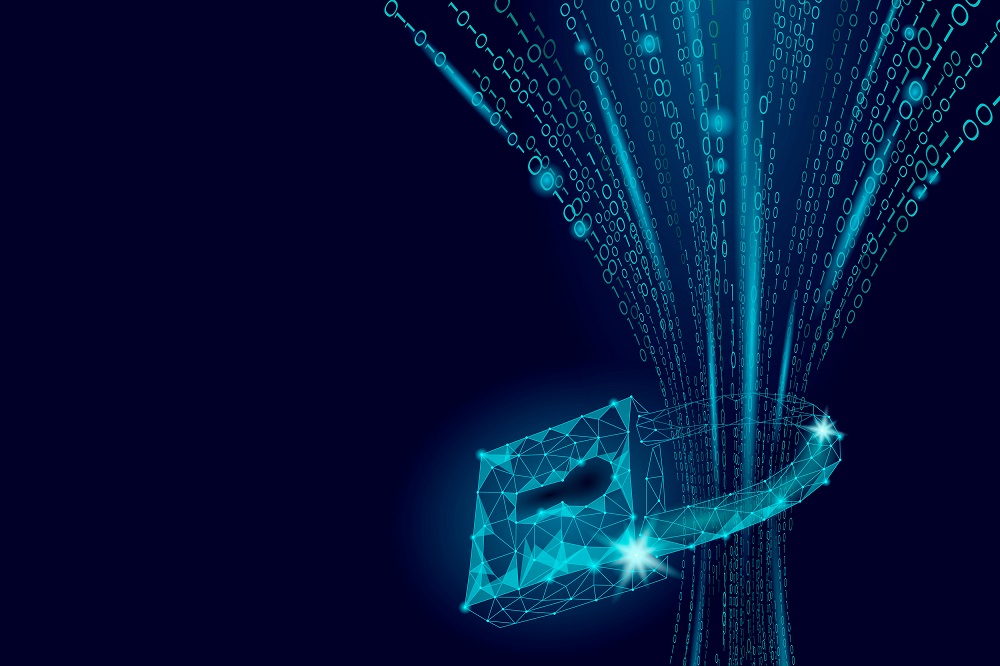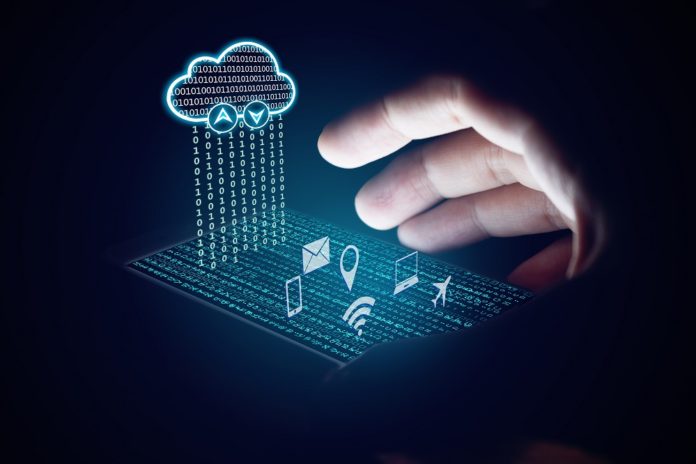We are living in the era, where technological breakthroughs are happening at such a pace that was never seen before. It is the time of IoT, Deep Learning, Chatbots, Blockchain & Biometrics to keep things tight & secure!
It is the year 2020! The world is currently trying to figure out how to deal with an on-going pandemic that has now reached almost every corner of the world. But thanks to the advanced technology, many researchers are ready to launch the vaccines in the fastest time ever.
This is also the year where IoT has become the common household product, but on the contrary, online cyber-attacks have been at an all-time high.
It is also the year where still self-driving cars for a common public is far from reality but is also the year where advancement in machine learning has taken some impressive strides. Thanks to these advancements, now people are more worried about AI singularity that is being believed to end the human race!
But later on these topics… Today, I thought to cover biometrics. A concept that has widely been used for keeping information & access secure by the means of authentication & verification.
Considering all the advancements in IoT, Cloud, Blockchain & others, biometric has become a necessity or an integral part of the modern tech landscape. As of now, everyone or most of us can understand what biometric is, and if not, then they have definitely heard of it.
We are using it in our everyday lives – from unlocking smartphones, or at airports, or at hospitals for keeping our reports safe, or even at offices to start the day.
Some of the common ways we are leveraging biometrics require physiological biometrics such as thumb or fingerprints or face recognition. But apart from these, other physical biometrics that can be used are iris scanner, palm shape & so on.
Alongside physical biometrics, behavioral biometrics is also becoming popular. For instance, when you visit some websites, then how you navigate it, or what you click on it can be recorded by businesses or governments to identify your behavior & create your biometric profile. It can be used for tracking or identification. Spooky? Don’t worry, read further to understand what Biometric actually is!

Facts on Biometrics!
- In 2018, the global market of biometric was about $14.6 Billion & is expected to grow by 16% until 2027.
- It is predicted that by 2027, it will reach over $55 Billion.
- The use & implementation of Biometrics has reached almost every country in the world.
- It is commonly being used in aviation, banking, online shopping, industrial developments & so on.
- Biometric is also heavily implemented with other advanced technologies like AI & IoT.
- Thanks to its increased demand, manufacturers are regularly coming with advanced biometric features like fingerprint, iris, face & even voice recognition.
- Big names like Google, Apple, Samsung & Huawei have heavily used Biometric sensors for their devices.
- The growing use of digital payment, mobile banking, e-wallets & others has played a major role in increasing the demand for advanced biometric sensors.
- This technology has significantly helped in reducing the risks of identity theft, payment fraud & other possible online or offline frauds.
- Some of the names that are the leading names in this industry are BIO-key International, Fujitsu Limited, Aware, IDEMIA, Suprema Inc., Precise Biometrics AB, Imageware Systems & Secunet Security Networks AG.
What Is The History Of Biometric Authentication & Verification?
When asked about the history of biometrics, many of you will assume it as relatively new technology. But actually, it isn’t. Though it is not prehistoric but is definitely over thousands of years old!
So, let’s go down all the years to uncover the origins of Biometrics!
500 BC: Babylonian Empire
Its earliest traces can be found as far back as 500 BC in the Babylonian empire. It is believed that fingerprints were used as biometrics to record business transactions in clay tablets.
Stories & Debates of 1800s
However, the first record of a biometric system can be traced to the 1800s in Paris, France. A. Bertillon envisioned & created a method of specific body measurements. It was used for identifying, classifying & comparing criminals. Though it was not as perfect as today’s biometrics but it gave the idea of using biological characteristics for authenticating identity to the modern world.
In the 1880s, the use of fingerprinting gained popularity not just for identifying criminals but also for signatures of individuals. By then, it was clear that fingerprints were unique to each person & can be used for a person’s identity.
Still, experts are debating who exactly instigated identification through fingerprinting, but it was Edward Henry who developed the first fingerprinting standard. It is known as a Henry Classification System.
Within no time, law enforcement authorities have adopted this system replacing Bertillon’s method for identifying criminals. And with this, started the century-old race of developing advanced biometrics.

The 1900s: The Biometric Boom
With the change of the century, a boom in biometrics can be observed everywhere. It grew exponentially as a field of research. With so many researches, it would be impossible to list every one of them, instead, I’ll highlight the notable ones and probably after the second half of the 1900s.
For the first time, researchers managed to develop semi-automated facial recognition methods in 1960. It was based on analyzing facial features within an image & then extracting usable feature points from the image. It was more manual than today, where we use facial recognition to unlock our phones.
Till the time humanity reached the year 1969, facial recognition gained immense popularity among law enforcement bodies. It was so popular that the FBI started pouring funding for automated processes, and this led to the development of some of the most advanced & sophisticated biometrics sensors. These were capable of capturing & extracting data with high accuracy.
During the 1980s, the National Institute of Standards & Technology was successful in creating a speech recognition system. It became the foundation of the speech recognition systems & voice commands that we are using today.
In 1985, researchers realized that just like fingerprints, the human iris was also unique for every individual and can be used for biometrics.
In 1991, the first facial recognition technology was revealed that allowed real-time facial recognition. Despite having many faults, this concept led to the boom in researches in facial recognition technology.
The first iris recognition system was patented in 1994 & later, it was also discovered that the pattern of blood vessels in human eyes was unique as well and can also be used for authentication.
The year 2000 Onward- The Big Stride In Biometrics
When the year 2000 began, researchers were creating numerous types of biometric-based authentication systems all over the world. Now its use was not limited to governments or large corporations. These were being sold in commercial products and even being used at big events.
In the last couple of decades, all the researches in various aspects of biometric technology have continued at the same or even higher pace. Now we can say that from a novelty technology, it has become a part of everyone’s life.
In 2013, Apple became the first company to use a fingerprint lock to unlock the iPhone. It led to the worldwide acceptance of biometric for authentication & verification of an individual.
Today, almost every mobile phone is equipped with some or other type of biometric technology for authentication on a regular basis.
Also Read: Advanced Tips to Safeguard Your Online Privacy
What Is The Concept Behind Biometrics Technology?

The term Biometrics means Life Measurement, however, it is more associated with the uniqueness of the physiological characteristics of an individual for authentication & verification. One of the major applications used heavily is associated with security.
But in fact, biometric technology has a much wider use including financial services, data accessibility, politics, architectures, preserving ecosystems & so on.
Overall, the concept of biometric is based on human physical & behavioral characteristics that are used for identifying a person to grant access to the system, data, or devices.
These characteristics may include fingerprint, voice, facial patterns, iris, typing cadence & so on. Each of these characteristics or identifiers are believed to be unique for each individual. In some cases, these are also used in combination for increasing efficiency & accuracy by several folds.
This method of identification & verification is highly preferred over the traditional methods of using PIN or passwords. There are various reasons behind it such as the need for the physical presence of the individual during the time of identification & others.
But when it comes to biometrics, it omits most of the reasons making everything quick, accurate & efficient.
When it comes to the biometric system, it can either be an identification-based system or a verification-based (authentication) system.
Identification-based biometric systems are used for identifying a person without his knowledge. For instance, using a system having a camera & facial recognition system to scan a crowd. With this, a person can determine any individual by matching it with the database.
Verification-based biometrics systems follow a one-to-one concept. It is also used for verifying the person’s identity but with consent. For instance, any individual can use his or her finger scans to enter into any restricted premises or access to a bank account through a retinal scan.
These biometric systems function by comparing an enrolled or registered sample with the newly captured sample. Generally, it is a 3-step process that involves capturing, process & enrolling the data followed by identification or a verification process.
In capturing, the raw biometric sample is captured using the required type of sensors such as fingerprint scanner or any other. The sensors can vary as per the biometric sample.
This process is then followed by the second phase called processing wherein, the distinguishing characteristics are extracted from the raw biometric sample. It is then converted to a biometric identifier record which is also known as a biometric template or biometric sample.
The next phase is enrolling where the processed sample is registered or stored in a storage medium or database for comparison in the forthcoming time for authentication or identification. Remember, here the processed sample is just the mathematical representation of the biometric instead of the original biometric sample.
In several commercial applications, there is only the requirement of a processed biometric sample, and you cannot reconstruct or create the original biometric sample from this identifier.
Also Read: Learn About Biometric in CISSP
What Are The Types Of Biometrics?

Biometric identifiers can be categorized into two types depending upon human characteristics. These are physical identifiers & behavioral identifiers.
Physical Identifiers
For the most part, physical identifiers are device-independent & immutable. These includes:
1. Fingerprints
Thanks to the widespread deployment on smartphones, fingerprint biometric scanners have become common these days among regular populations. Any device that gives the option of touch can be used for a fingerprint biometric scanner. These devices may be smartphones, door panels, computer touchpad or mouse & so on.
As per the findings of Spiceworks, fingerprint scanning for biometrics is used by almost 57% of companies making it the most common type of biometric authentication system.
2. Physiological Recognition
This includes the usage of facial recognition, iris or retinal scanning, ear recognition & palm vein recognition. All of these make the use of physiological recognition as the 2nd most common type of biometric-based authentication and is used by around 14% of companies.
Among all the types of physiological recognition, image-based authentication including hand-geometry recognition is used by 5% of all companies.
3. Voice Recognition
Voice recognition is already being used by telephone-based service portals & voice-based digital assistants for authenticating customers & identifying users. AS per Spiceworks, around 2% of companies have implemented voice recognition biometrics for authentication purposes within the enterprise.
4. DNA
DNA scans are currently being widely used by law enforcement bodies for identifying suspects & of course, you can also see its use in movies. In real-time, the usage of DNA sequencing is way too slow for using it regularly.
However, things are now changing rapidly, Recently, a scanner was launched at $1000 that promises to make a DNA match in minutes. And seeing the competition, it is very likely to see the downfall in its market price.
5. Digital Signatures
Already digital signatures are widely used in the banking sector and retail checkouts. These have become a good choice for individuals or customers who are expecting to sign their names.
Behavioral Identifiers

These are the recent arrivals in the world of biometrics & commonly used alongside other biometrics-based methods because of low reliability. But with time, it is expected that these identifiers’ accuracy will increase as the technology will improve.
Contrary to physical identifiers that are limited to certain defined human characteristics, behavioral identifiers are only limited to human imagination. As of now, these are regularly being used to distinguish robots from humans. For instance, it is playing a crucial role in detecting & filtering out spams or even sensing attempts of brute force login attacks.
Some of its common approaches are as follows:
1. Navigation Patterns
Mouse movements or finger movements on touch screens or touch pads are commonly used for tracking. With the use of software, these are relatively easy to detect without any requirement of additional hardware.
2. Typing Patterns
Whether you believe it or not but everyone has a different typing style. The speed at which an individual types, the impact on keywords, or the total time it takes a person to finish a sentence or to move from one letter to another are all unique. These can be used for identifying a person.
3. Engagement Patterns
Be it mobiles or desktop, as of now, we all are using some or other types of applications. The way we use it, the way we open it, the time or location from where we are using any application, the way we navigate applications, how low we are allowing our battery before we plug it to charging, at what degree we tilt our phones while holding them, or even the frequency we are using our social media channels is all depend upon our engagement patterns.
These behaviors are believed to be unique for every individual & can be used for distinguishing people from bots until these get as smart as mimicking any humans. Moreover, these can also be used alongside other biometric methods for increasing reliability. In the future, if technology improves, it might be considered to be used solely for all types of applications.
4. Physical Movements
Even the way a human walks is unique & can be used for identifying or authenticating an employee in a building. It can also be used as a second layer of security for any particular sensitive regions.
What Are The Applications Of Biometrics?

I can bet that by just hearing the term biometrics, most of us can imagine the option of fingerprint unlock in our smartphones or thumb impression during the signing in our office, but actually, it is more than that. It can be used as a modern-day identifier for a wide range of applications with maximum reliability & accuracy.
1. Security
The one thing for which biometric is being leveraged heavily is to enhance security. Smart mobiles have implemented biometrics for adding an extra layer of security by using facial recognition, fingerprint scanner, or voice recognition.
Recently, Samsung has developed a smartphone having an iris scanner. Whereas, Google’s data centers are using multimodal biometric-based verification for tracking security.
Since passwords or pins are hard to remember by many people & also weak in terms of security, Biometric-based visitor management systems such as VisitorTrack is using biometric systems for keeping the record of all the activities of each visitor.
Another fact is that security checks are boring & takes a lot of time. To tackle this, Japan is using facial recognition at one of the gates of its airports. This concept automatically takes & scans each passerby as they go through the gate & then match it with the stored images.
Another great example of the use of biometrics for security is on the Ukrainian Border. Ukraine is using this technology to keep track of all the migrants, and it saves a lot of hassle, saves time, maintains high efficiency & reduces staff costs.
Also Read: Zero-Knowledge Proof: There won’t be any information to hack!
2. Data Access
Biometrics can also be used for providing personal security when it comes to important data & maintaining the individual’s privacy. It’s been a long time since HP is using fingerprint-based biometrics on the laptops for granting access. Moreover, to provide maximum security to the user, mobile devices are now equipped with numerous types of biometric identification technologies. Even on the cloud, the widespread use of biometrics one can observe.
3. Finance
The use of biometric is being implemented in almost all types of financial services all over the world. Recently, the bank of Russia has allowed mass biometric data enrollment for all the accounts holders of the bank. It was done with the aim of digitization where any account holder will be able to do any transactions, or make any type of payment, or even apply for a loan just through the biometric scanners installed in his or her device.
Similarly, the Bank of Cyprus is now issuing biometric-based payment cards which will only work when it is held by its owner. Even ATM machines in various countries are now using fingerprint or iris scanners, or facial recognition to allow access. Now people do not have to carry anything or even remembering the account number is not required for making the transactions.
4. Architecture
Thanks to the vision of architects A Sussman & designer J. M. Ward, now we also have a system that has the capability to measure the eye movement of an individual while viewing a building. It can also tell how long a person views a particular part of a building.
After collecting the data, this system then turns it into a heat map that tells the architect where a human is focusing and on what. Moreover, you can also integrate this software with a brainwave scanning that will give you the exact motion of the viewer. Cool isn’t it. It’s definitely a golden age of being an architect.
5. National or Political Activities
Biometric systems have given great opportunities for governments to keep all the information safe & secure. It is also being used for several national projects for enhancing the efficiency.
One such instance can be seen in Yemen, where the government has installed a biometric voter system that can register a voter & then identifies him or her during the voting. It can automatically check whether the person has previously voted or not & the possibility of the fraud is nil since it is based on biometric measurements.
Another great example can be of India, where the recent government has taken an initiative for one identification system “Aadhar card” through a facial scan, iris scan & fingerprints. Recently, even Bangladesh started using smart national IDs with fingerprints & iris scans.
6. Physiological Research & Advertising
Effective advertising campaigns are very essential for the success of any business. All the advertisers are constantly on their toes to find the patterns from their probable customers to enhance the sales.
For this, all types of physiological research have been carried out on viewing advertisements. It includes measuring heartbeats, brain waves & iris movement of the customers.
One such company that has used this form of advertisement in regular life is Tesco. It came up with the concept of facial detection that allowed them to personalize advertisements when customers came to the counter for making the payment in the gas stations.
7. Preserving Ecosystems
Almost on a regular basis, one can come across news saying that poachers killed Rhinos or other similar endangered species. To fight against all poaching activities & to provide safe environments for these endangered species, a national park in South Africa is using biometric-based security management systems.
These include facial recognition & heat signatures through CCTV & drones. Apart from this, each visitor has to go through the fingerprint & facial scans on the entrance. This ensures the safe heaven not only for rhinos but for almost all the species inhabiting the area.
What Are The Disadvantages Of Biometrics?
![]()
Despite all the benefits that come with Biometrics, it also has some disadvantages. On one hand, it can truly enhance security, increase efficiency & convenience, but on the other hand, there are also risks of data breaches, false positives, privacy for users & high cost.
Data Breaches
With the biometric use at an all-time high, businesses & governments are regularly collecting & storing huge amounts of personal data. As the technology has advanced, the risk of online threats from hackers has significantly spiked which makes biometrics a double-ended sword.
Since biometric-based data are irreplaceable, governments or corporations are required to treat all these sensitive information with increased caution & security which is more expensive & technically difficult. It has been hard for many corporations to stay ahead of all types of fraud advancements.
Another issue is that if the PIN or password of any individual is compromised, it can be easily replaced or changed. But in the case of biometrics using physiological or behavioral identification, this is not possible.
Also Read: Rediscover the World of Hacking- An Ultimate Guide!!
High Cost
It is not a question that more advanced systems require more cost, investments & experts. In another survey done by Spiceworks, 67% of IT professionals accepted that the cost was the biggest reason for not adopting authentication based on biometrics.
Another issue with the organization was that it was not only about shifting to biometric authentication, but they are also required to constantly pay for upgrading their current systems to support all the advancements made.
False Positives
False positives, inaccuracy & bias are some of the major issues that raise questions against the usage of biometrics. As of now, the most common method for biometric authentication is based on partial information of the user’s identity.
For instance, currently, a mobile-based biometric device scans the whole fingerprint for the enrollment phase & then converts it into the data. But in the forthcoming time, it is speculated that only a certain part of fingerprints will be used to verify the identity making it a quicker & faster process.
In the year 2018, a team from New York University successfully created an AI algorithm that has the ability to crack fingerprint authentication with a success rate of 20%. It did so by matching the similarities of full biometric data with the partial prints.
In some cases especially when the users are handicapped, biometric authentication can be biased because of the inabilities of such individuals to provide the required physical input. In another scenario, if a person injures his or her finger that they were using for biometric authentication, then it is very likely that print won’t match the data, and their access will be barred.
Tracking & Data
Privacy of the users becomes very important especially when the increased use of biometric authentication & verification can be seen all over the world. In certain countries that use heavy & large surveillance, people always have the risks of leaving a permanent digital record when their biometrics samples are converted into the data. There is a high potential for tracking or hacking such information for ill purposes.
On several occasions, governments in various parts of the world have already used facial recognition software for tracking & identifying people with high accuracy. It becomes scary when it comes to the privacy of human beings. With the increased use of surveillance, the biometric data can be used to track anyone with or without their knowledge or consent, & this is what makes a chilling scenario.
Concluding Remark!

And with this, we will end this article on biometric authentication & verification. Contrary to anyone’s belief, this technology has come a long way since its initial use. It won’t be wrong to say that its early use may not have high accuracy, but all the current advancements have definitely garnered all the popularity across the globe.
In this article, we have been on a roller coaster ride to the history of biometrics. We have observed how biometrics evolved, what led to the biometric boom in the 90s & also all the developments of the 21st century.
Later, we have also understood the concept of biometrics & how biometrics works. We have explored various types of biometrics including the physical & behavioral ones consisting of fingerprint scans, iris scan, facial recognition, DNA, voice recognition, typing patterns, body movement & so on.
In the last section, we have explored the applications of biometrics & of course, the downside of this amazing technology. We have learned how it can be used other than security in finance, political activities, architecture & even advertisements.
Just like every other coin, the use of biometrics comes with consequences as well. Consequences like a data breach, question on user’s privacy, high cost & false positive or biases.
Whatever the case is, I am one of the big followers of all the technological advancements. Whether be it an AI, IoT, Cloud, or even Biometrics, I truly believe that this technology promises a lot of opportunities then all the threats. But what’s more interesting is to see how this technology unfolds in the future! What do you think? What does the future hold for Biometrics? Do comment & share your views with others.
If you are the one who has the flair to help people & businesses neutralize the ever-growing risk of cyber threats then it’s never too late to become a cybersecurity specialist. You can begin with our exclusive e-degree program that will help you learn cybersecurity, ethical hacking, password cracking & many more similar concepts from scratch.









